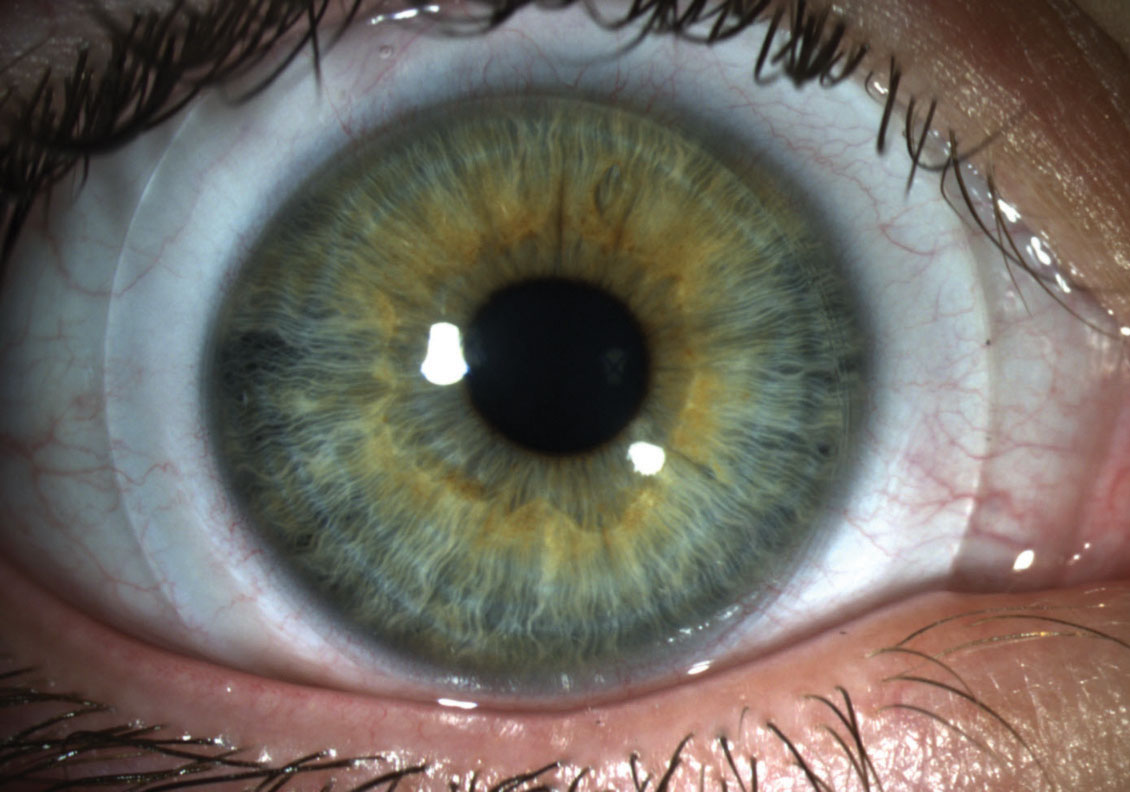 |
| Tests of lenses with diameters of 15.6mm and 18mm found no clinically significant changes in IOP during five-hour lens wear in young, healthy individuals. Photo: Vision Research institute at Michigan College of Optometry. Click image to enlarge. |
It’s been proposed that as scleral lenses settle on the eye, compression of episcleral veins or deformation of the trabecular meshwork and Schlemm canal may lead to increase in intraocular pressure (IOP). In a recent study, researchers evaluated the effects of scleral lens size and the duration of wear on IOP during lens wear and found that well-fitted scleral lenses do not result in clinically significant changes in IOP during five-hour lens wear in young and healthy individuals.
IOP measurements were performed on 30 individuals using a pneumotonometer. Each wore a scleral lens of either 15.6mm or 18mm diameter for five-hour bilateral wear over a course of two visits. Scleral IOP was measured during the predetermined intervals—1.25 hours apart—during the five-hour scleral lens wear. Corneal IOP was measured before and after wear. The primary outcome measure was the mean change in scleral IOP from pre-lens insertion baseline.
Corneal IOP remained unchanged after scleral lens removal compared with the baseline measurements. Scleral IOP peaked at 2.5 hours after lens insertion, which coincides with the time of most rapid lens settling with both small- and large-diameter lenses. Scleral IOP restored to the baseline after 3.75 hours of scleral lens wear with both diameters. Lens diameter did not have an impact on IOP. The observed increase in scleral IOP of slightly above 1mm Hg at after 2.5 hours is unlikely to be clinically significant in normal eyes without the diagnosis of or significant risks for glaucoma.
At one point, six individuals showed an increase in scleral IOP between 5mm Hg and 7mm Hg, with scleral IOP restored to the baseline on subsequent measurements.
“Therefore, we reason that the pressure exerted by a well-fitting scleral lens on the bulbar conjunctiva of a young and healthy eye is not sufficient to overwhelm regulatory mechanisms that exist to maintain equilibrium between the rate of aqueous production and drainage to maintain clinically acceptable levels of IOP,” the authors explained in the study, published in Eye & Contact Lens. “However, given the evidence that scleral lens wear does result in some degree of alteration in intraocular pressure at two and a half hours after lens insertion, further studies are needed to investigate the capacity of glaucomatous patients to adapt to the scleral lens-induced changes for maintaining clinically acceptable levels of IOP.”
Litvin TV, Tse V, Chung L, et al. Effect of scleral contact lens size and duration of wear on intraocular pressure effect of scleral lenses on intraocular pressure. Eye & Contact Lens. May 17, 2023. [Epub ahead of print.] |

